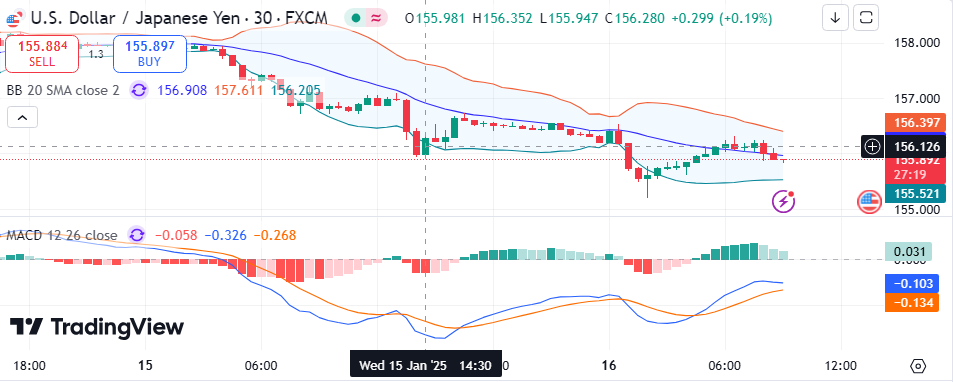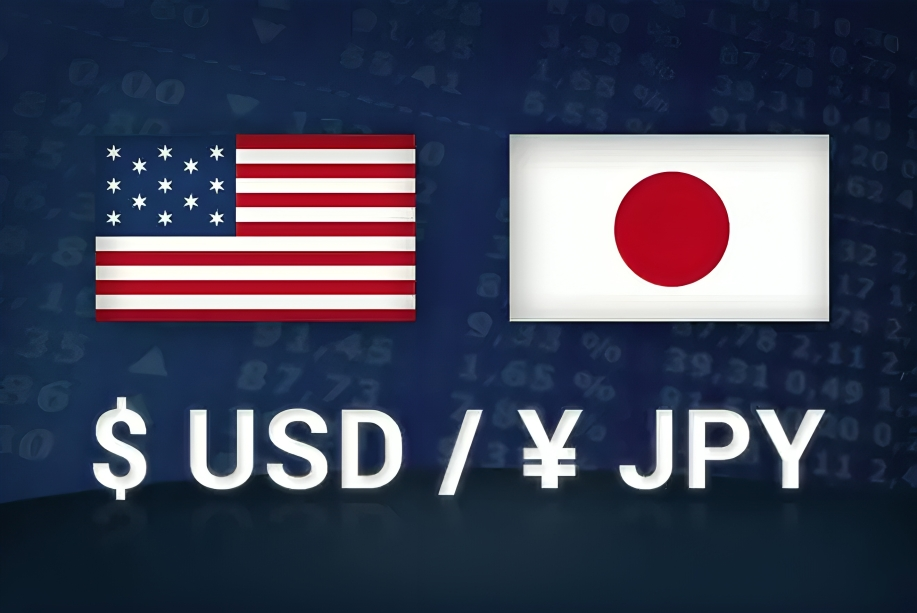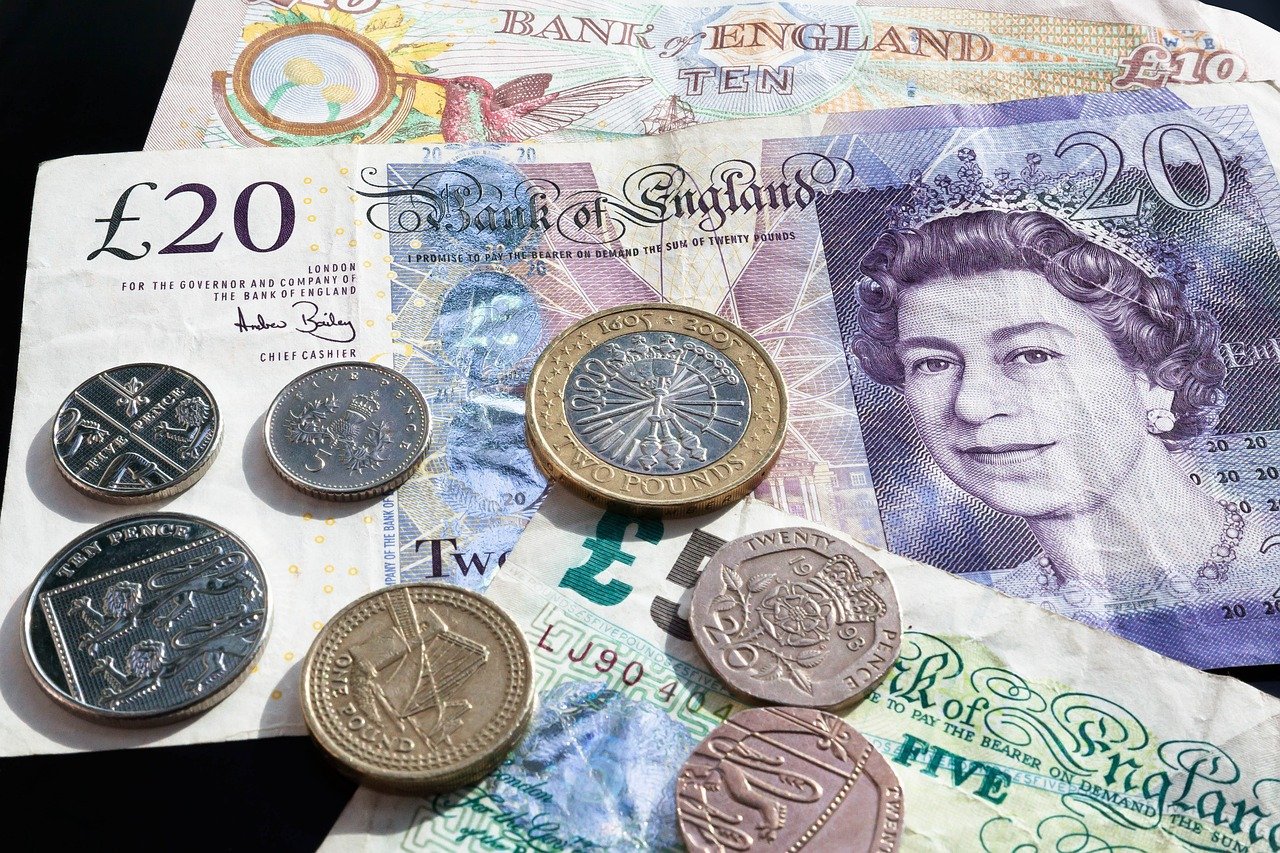Over the last several days, the Japanese Yen had been picking up pace on positive news in form of building the expectations for next week’s interest rate hike from the Bank of Japan and strengthening inflationary tendencies in the economy of Japan, thus pushing JGB yields relatively closer to yields of US treasury bonds, an indicator in the favor of Yen. However, the USD/JPY pair continues to be strong, trading above the 156.00 mark, supported by a mild increase in the US Dollar and calming market fears over US President-elect Donald Trump’s trade tariffs. The latest US inflation data have helped shift the expectations for Federal Reserve policy and have been a source of strength for the Greenback. As the USD/JPY pair will likely be sensitive to key US macro data and the BoJ’s policy decision, the price will likely remain quite volatile with significant support at 155.00 and resistance at 156.35.
KEY LOOKOUTS
• Follow any news and updates on the Bank of Japan’s rate hike decision as this will significantly influence JPY strength and the USD/JPY movement.
• Pay attention to US inflation report surprises, where less-than-expected inflation data can easily weigh down on Fed tightening expectations and dynamics of USD/JPY.
• Track changes in the US-Japan yield differential: any signs of narrowing of this differential would further support the Japanese Yen, potentially limiting upside of USD/JPY.
• Be aware of overall market sentiment since a risk-on or risk-off mood swing could change the demand for safe-haven assets, such as JPY, and subsequently influence USD/JPY price action.
As long as the USD/JPY remains above the mark of 156.00, there are several important factors that would shape its future. First, the anticipation from the Bank of Japan’s decision regarding an interest rate increase will be the key, as any signalling towards tighter monetary policy would further strengthen the Japanese Yen. The second factor will be US inflation data, where softer-than-anticipated results might limit the Federal Reserve’s tightening moves, which could weaken the US Dollar. The narrowing US-Japan yield differential, which is being driven by rising Japanese bond yields, could continue to support the Yen. Lastly, market sentiment will be a significant factor; risk-on or risk-off moods will influence the demand for safe-haven assets like the Yen. Traders will have to watch these developments closely to gauge the future direction of USD/JPY.
Key things to monitor in USD/JPY are the BoJ’s rate hike decision, US inflation data, the yield differential, and shifting market sentiment affecting risk appetite.
• Growing bets for a rate hike by the Bank of Japan next week are supporting the Japanese Yen and influencing USD/JPY movements.
• Rising inflation in Japan strengthens expectations for further BoJ tightening, pushing yields on Japanese Government Bonds (JGBs) to multi-year highs.
• Softer-than-expected US inflation data has fueled speculation that the Federal Reserve may pause or slow down its rate hikes, impacting the USD.
• The US-Japan yield differential has been narrowing, with US Treasury bond yields retreating and JGB yields rising, which supports the Yen.
• Easing concerns about US trade policies and a positive risk-on mood are reducing demand for traditional safe-haven assets like the JPY.
• The USD/JPY pair has a resistance area near 156.00 and possible support near the psychological level of 155.00 and may even continue lower to 154.50.
• Traders are looking forward to the US macroeconomic data that may bring some hints regarding the Fed’s monetary policy, which can help decide the way for USD/JPY.
The Japanese Yen has gained recently as expectations for the BoJ’s rate hike in its upcoming meeting are rising. The Japanese economy is also experiencing rising inflationary pressures. Markets are increasing bets on the further tightening of monetary policy. That has pushed the yields on JGBs to multi-year highs. In conjunction with a narrower US-Japan yield differential, that has supported the Yen. The softer-than-expected US inflation data has prompted traders to trim expectations for aggressive rate hikes by the Federal Reserve, which in turn has resulted in a small recovery for the US Dollar. Despite this, the USD/JPY pair remains capped below key resistance levels, with a psychological barrier at 156.00 and potential support near the 155.00 mark.
As markets await the Bank of Japan’s policy decision and key US macroeconomic data, attention will be focused on how these developments influence the USD/JPY outlook. Narrow yield differential between US and Japanese bonds will continue to support the Yen, while a change in US inflation expectations would either dampen or boost USD demand. Of course, market sentiment is crucial; improving risk appetite and reducing trade concerns are reducing demand for traditional safe-haven assets, such as the JPY. Traders should pay close attention to these dynamics, as they may present the next important move of the USD/JPY pair; further breakdowns to 154.50 are possible if support levels are breached.
TECHNICAL ANALYSIS
Resistance areas for the USD/JPY remain around the 156.00 level, which has turned out to be one of the critical barriers during the past few sessions. If the pair can break above this level, then the next resistance zones are between 156.35 and 156.75, with further upside potential toward the 157.00 mark. On the downside, the psychological support at 155.00 is crucial, and a break below this level could open the door for a deeper pullback toward the 154.50 region. A move below 154.50 would likely be driven to the 153.40-153.35 area, where the pair may find support, potentially serving as the lower end of a four-month upward-sloping channel. The current technical outlook suggests that any sustained momentum above or below these key levels will determine the near-term direction for USD/JPY.
USD/JPY Daily Price Chart

Sources: TradingView, Prepared by ELLYANA
FORECAST
A push above the immediate resistance at the 156.00 level should send the pair towards the 156.35-156.45 zone, while a more significant break-out should push it above this zone toward 156.75 and maybe to the top at 157.00. Stronger and continuous bullishness will finally break into the multi-month top around 158.85-158.90 and make further way up towards the 158.00 psychological level.
On the flip side, the pair has key support near the psychological level of 155.00. A break below this could trigger a decline toward the 154.50 region, which aligns with the lower boundary of a four-month upward-sloping channel. If the pair falls further, it could test the 153.40-153.35 area, where a more significant support zone lies. A break below 153.35 could represent a deeper retracement with the possibility of revisiting 152.00, contingent upon broader market conditions.







